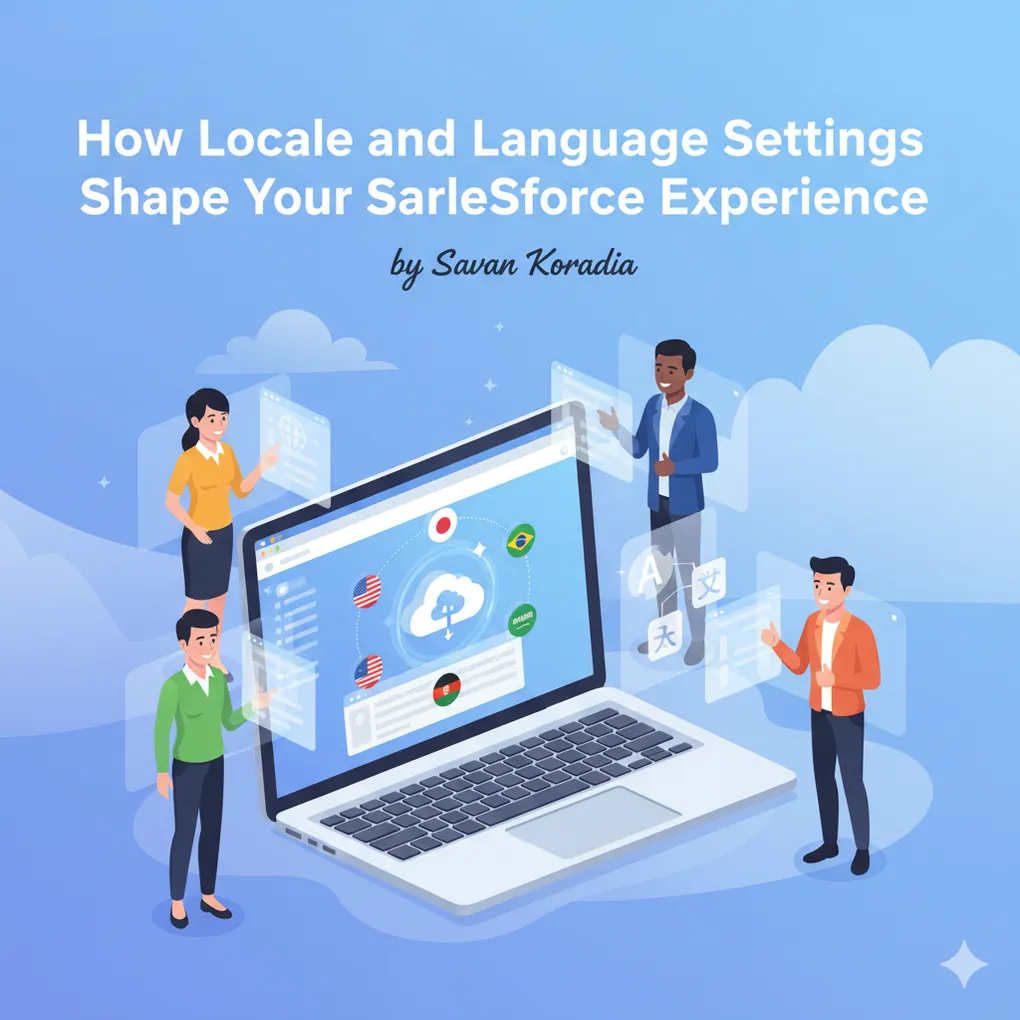
How Locale and Language Settings Shape Your Salesforce Experience
Table of Contents
- Let’s Get Started: Why Language and Locale Matter
- Locale vs. Language — Wait, Aren’t They the Same?
- Where These Settings Live
- What Changes When You Switch Settings?
- Some Scenarios to Watch and Troubleshoot
- Related Links
Let’s Get Started: Why Language and Locale Matter
What if you joined an MNC company that has different number and date format structures?
For example:
- For 10 Lakhs, you might use a comma after 2 and 3 digits like 10,00,000, whereas somewhere else it might be written as 1,000,000.
- You might prefer the date format dd-mm-yyyy, while others may use yyyy-mm-dd.
Having such different formats can cause trouble adjusting to the system, right?
That’s why Salesforce provides a feature that allows you to change language and locale settings — both at the organization level and user level.
This gives teams flexibility to adjust settings according to their needs and work efficiently, reducing barriers between users and the system.
Locale vs. Language — Wait, Aren’t They the Same?
There’s often a little confusion between the terms Locale and Language.
- Language: The specific language we speak and read. In Salesforce, it defines the language used to display content to the user (e.g., English, Hindi, French, etc.).
- Locale: The regional settings that define formats such as date, time, and currency. For example, a date in one region might appear as DD-MM-YYYY, while in another it could be MM-DD-YYYY.
Where These Settings Live
Organization-Level Settings
When a new playground or instance is created, it has default organization settings applied. These settings apply to all users in the system.
Let’s go to the section in Setup:
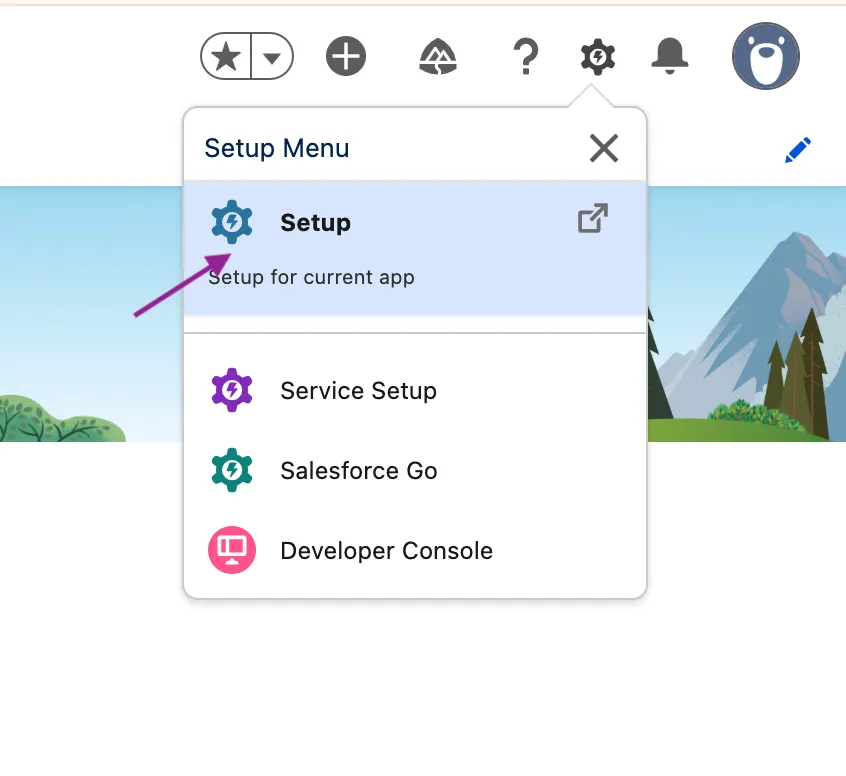
Setup > Quick Find > Company Information > Edit
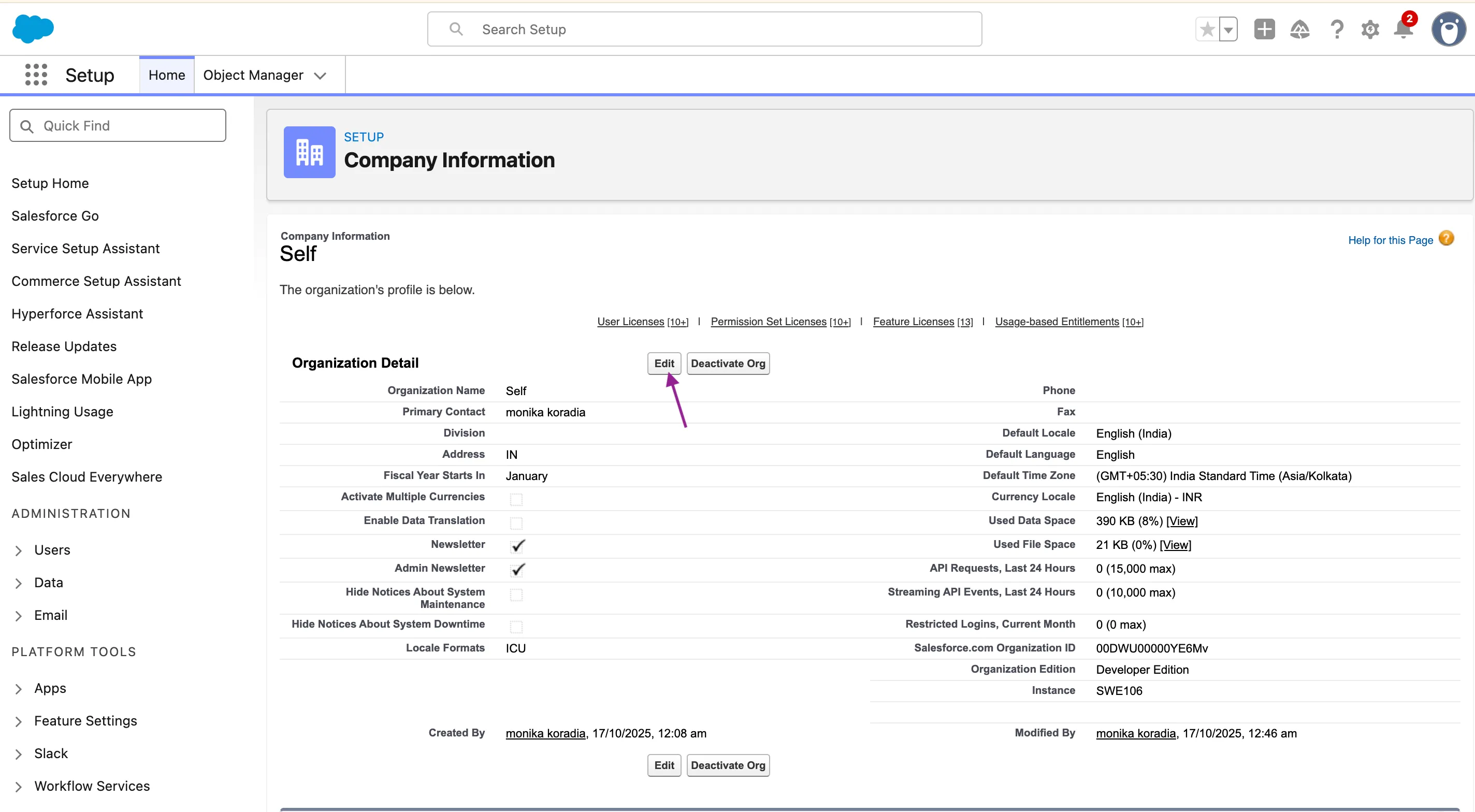
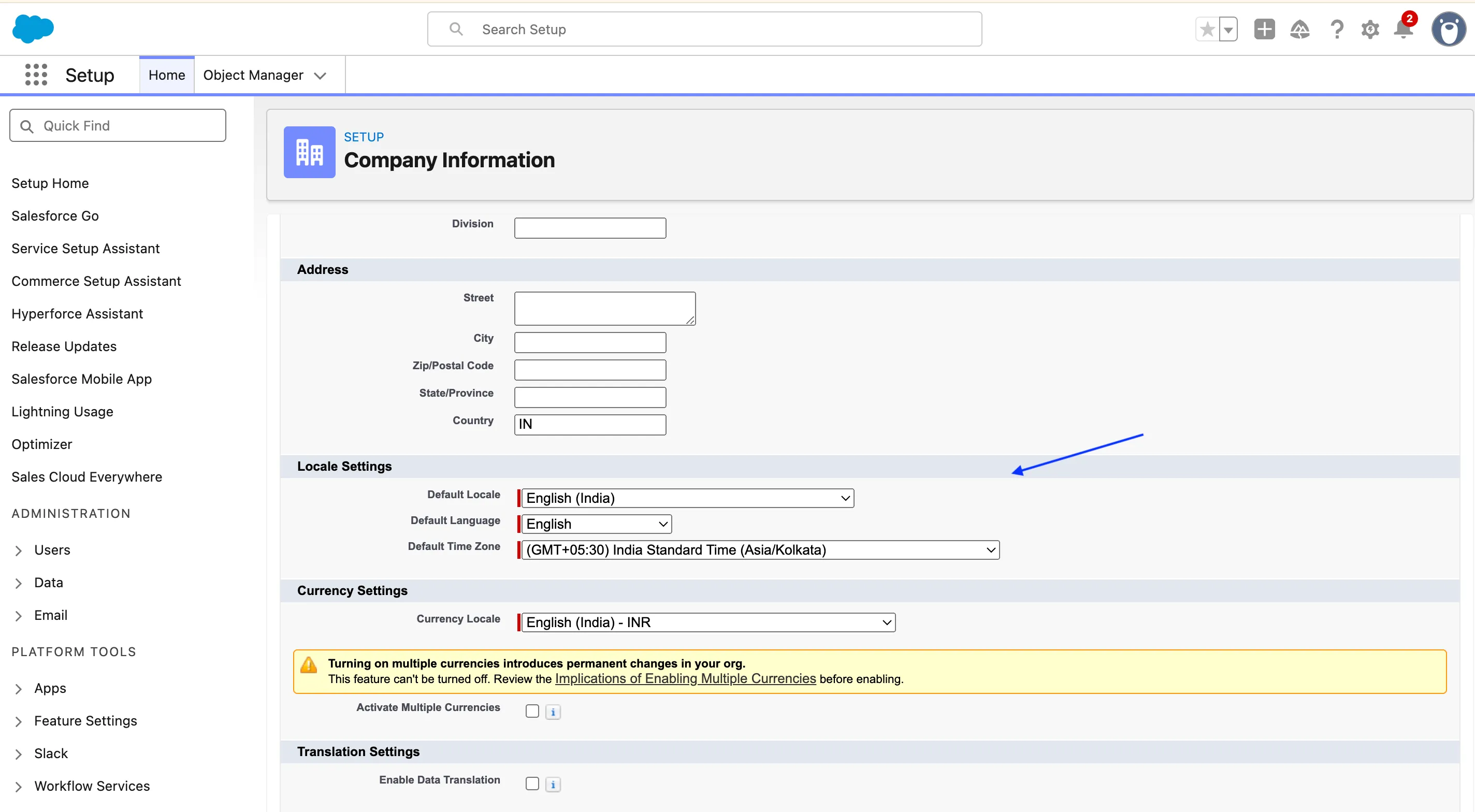
User-Level Settings
- Click on the user icon at the top-right corner.
- Click on Settings.
- Go to Language & Time Zone.
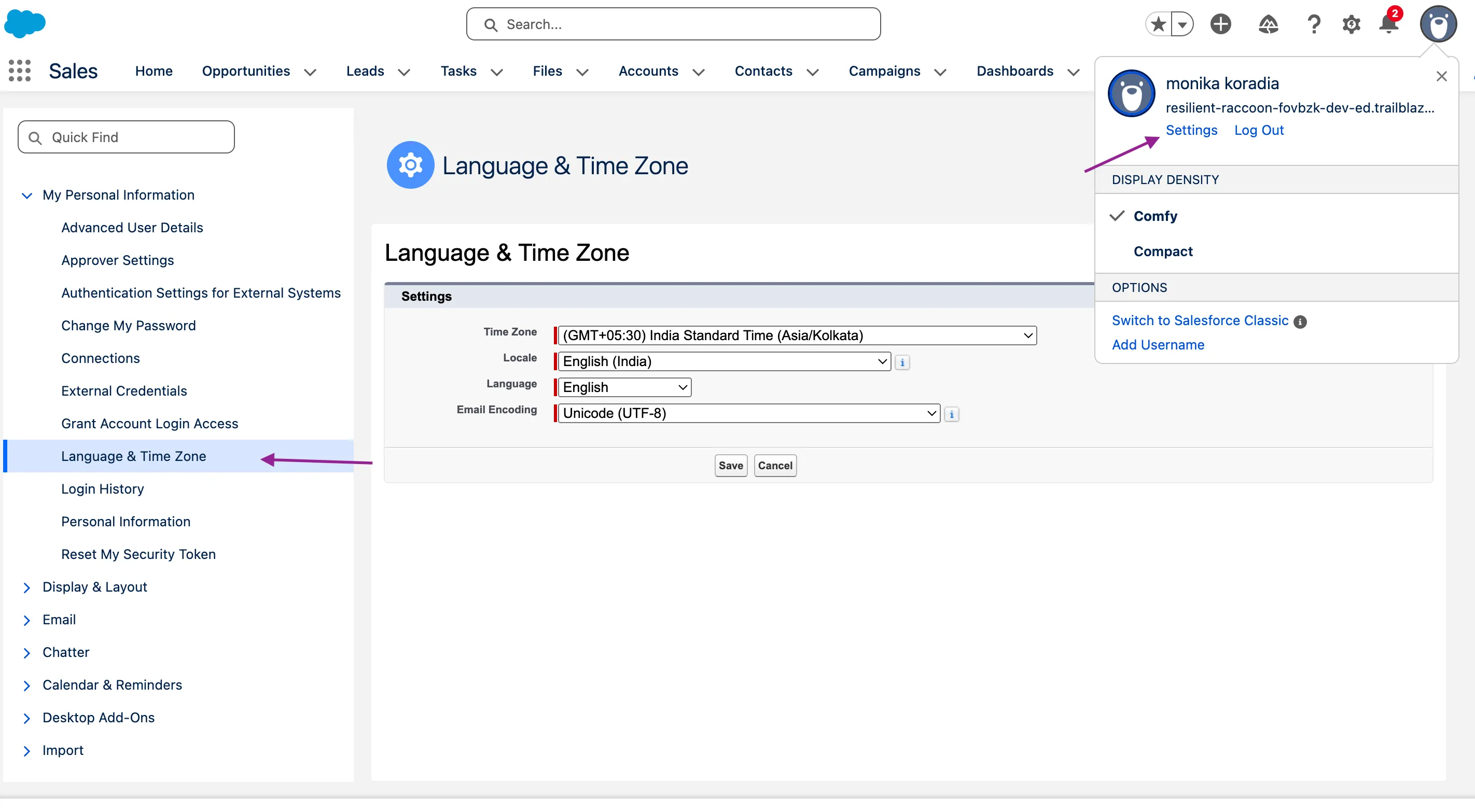
How Salesforce Decides Which One Wins
- By default, the organization-level configuration is applied to all users.
- Whenever a new user is created, they inherit the organization’s default settings.
- If a user changes these settings for themselves, it overrides the organization-level settings for their profile.
What Changes When You Switch Settings?
Now, let’s change some settings and see them in action.
-
Time Zone Changes Current setting: GMT+5:30 (India Standard Time). Notice the date format on the record details page.
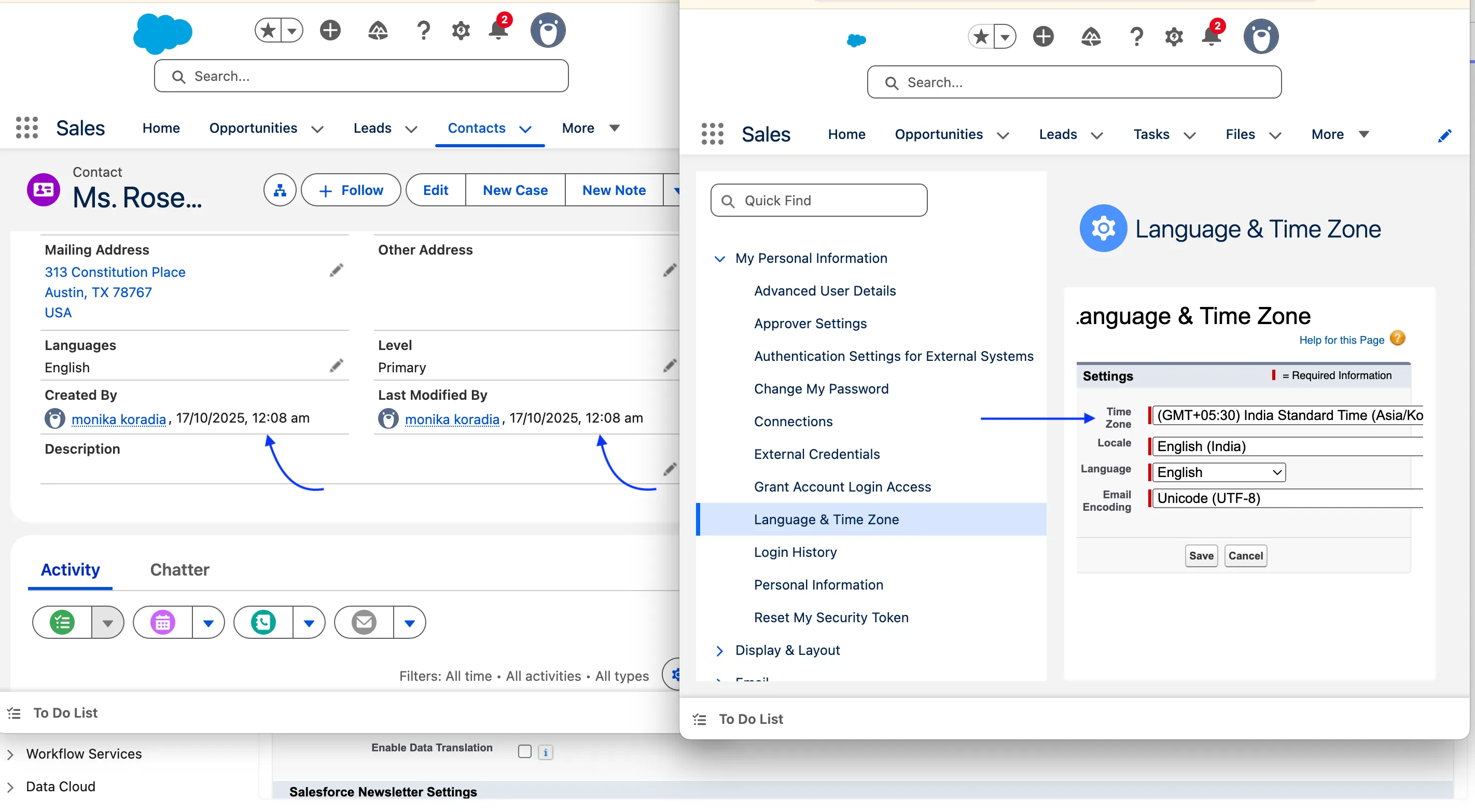
Now, change to GMT+12:00 Time. Notice how the date format on the record details page changes.
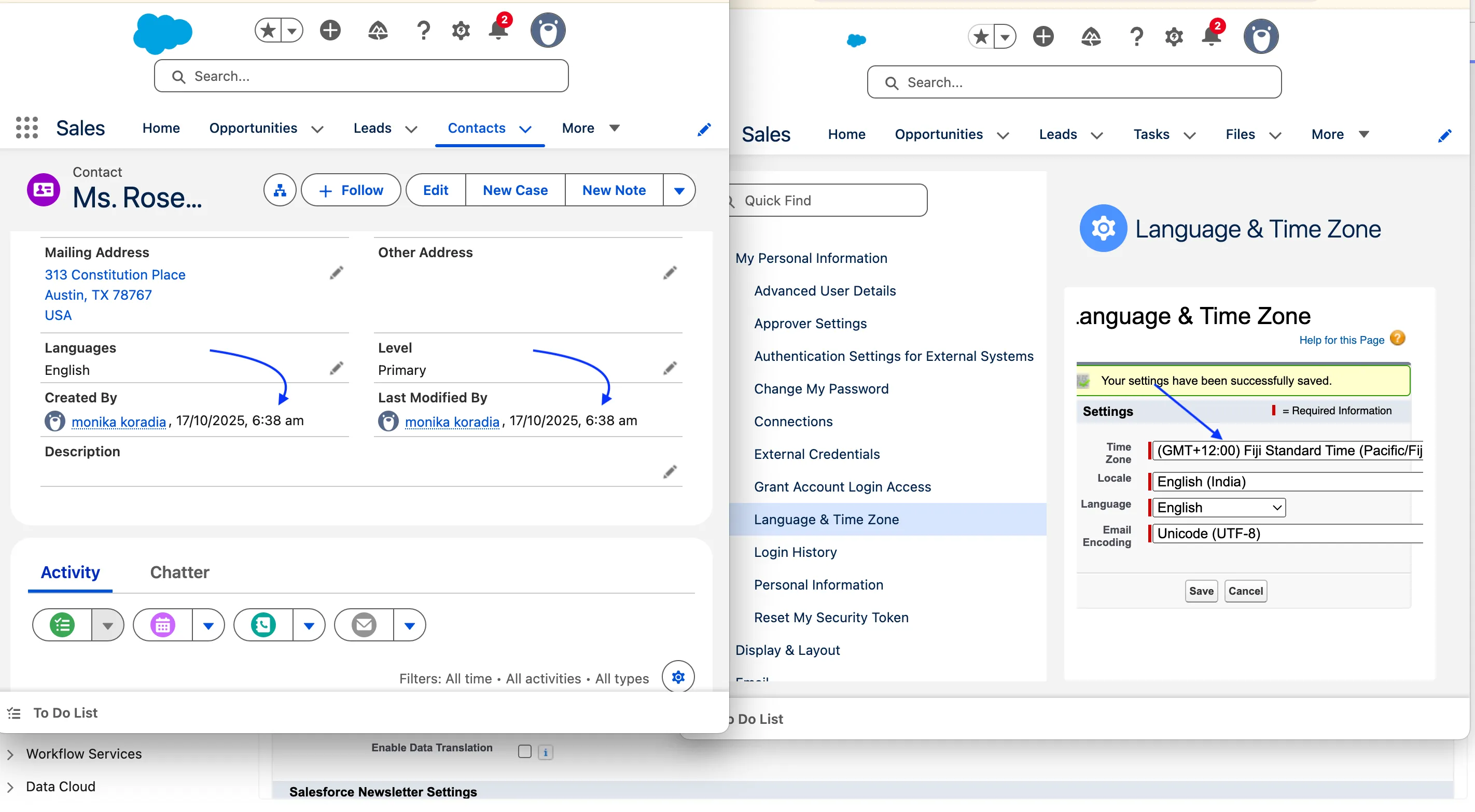
This happens because Salesforce stores time in GMT format, so it can display localized information based on each user’s time zone.
-
Locale Changes Let’s compare how the record details page looks under different locales.
English (India) — Notice the date format.
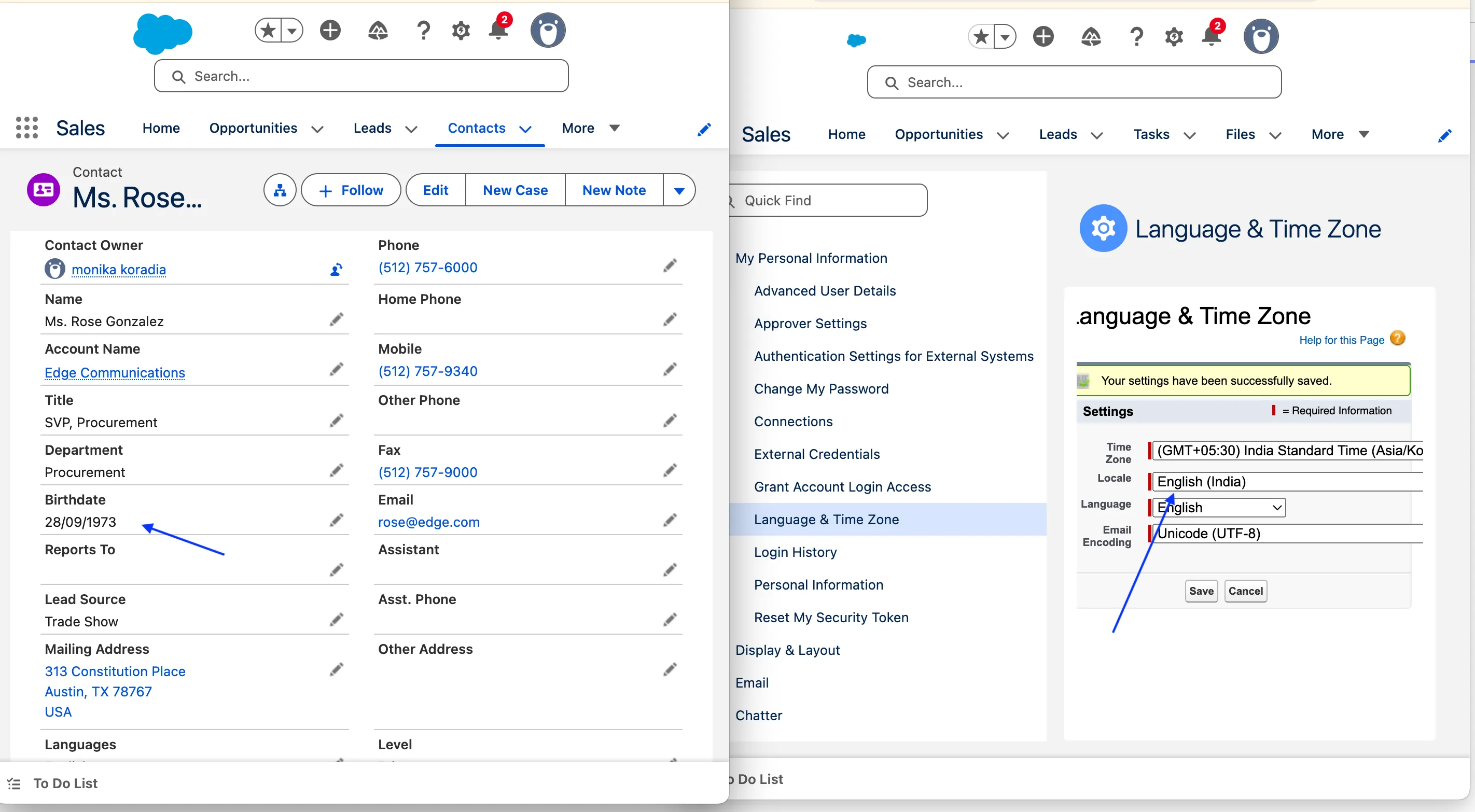
Now, let’s change to English (USA). The date format on the record details page is the same date, but localized to the U.S. format.
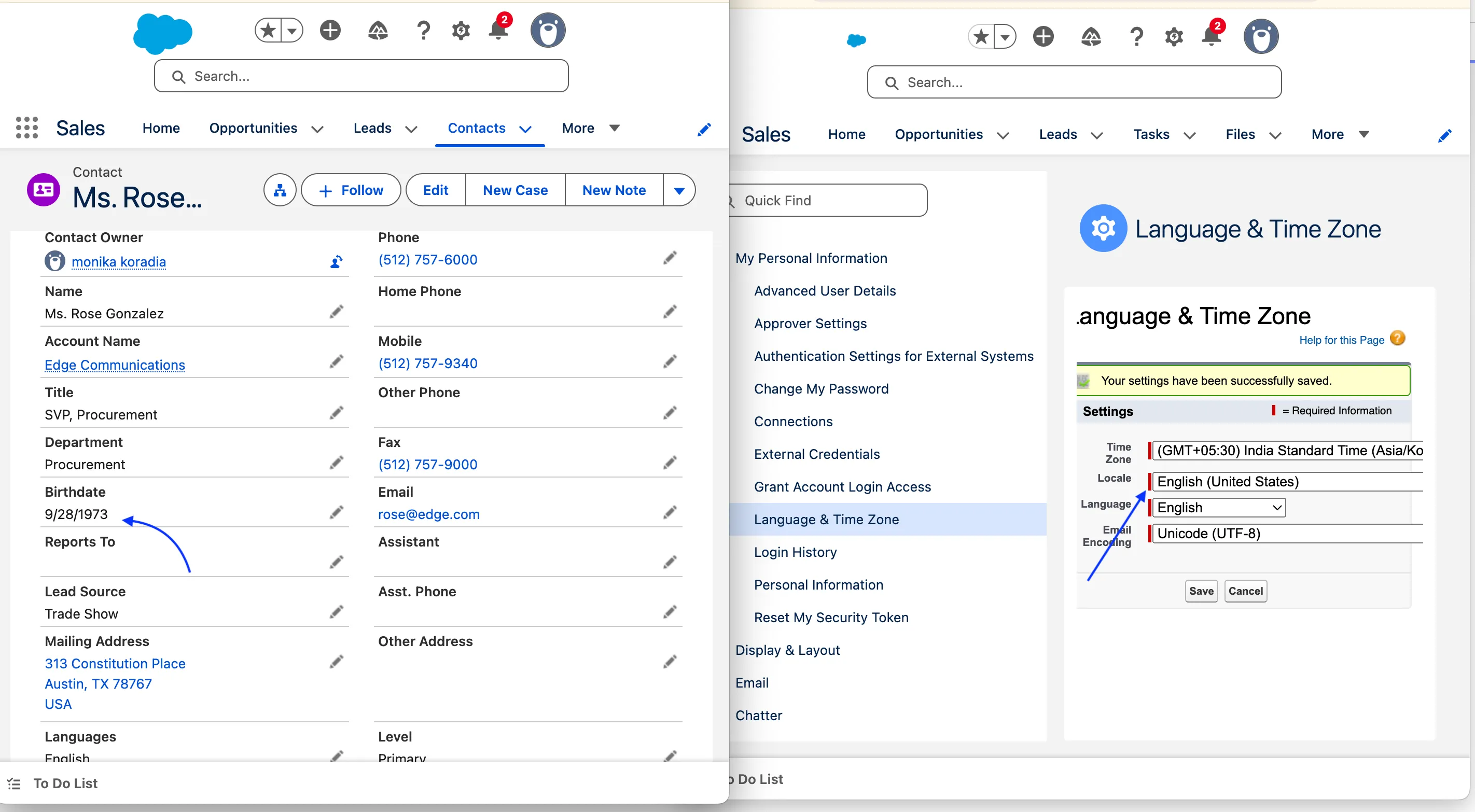
Next, let’s try Arabic (UAE). Notice that it hasn’t changed the entire language of the record details page, but certain details like date and time formats have been updated.
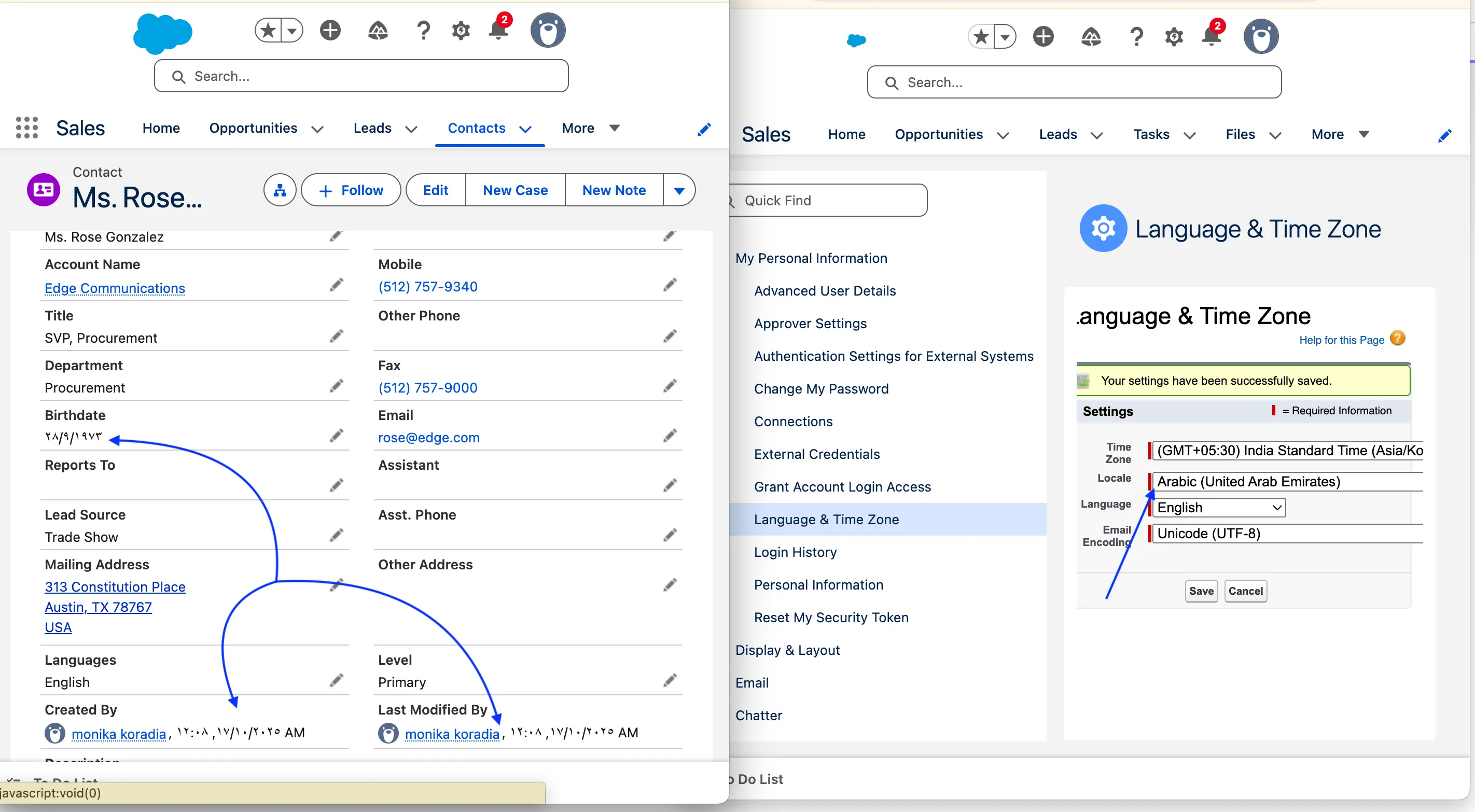
-
Language Changes
There are two types of language changes supported in Salesforce:
- User level: What the end user sees.
- Platform level: What the platform (admin/developer) user sees.
To access this: Access: Setup > Language Settings
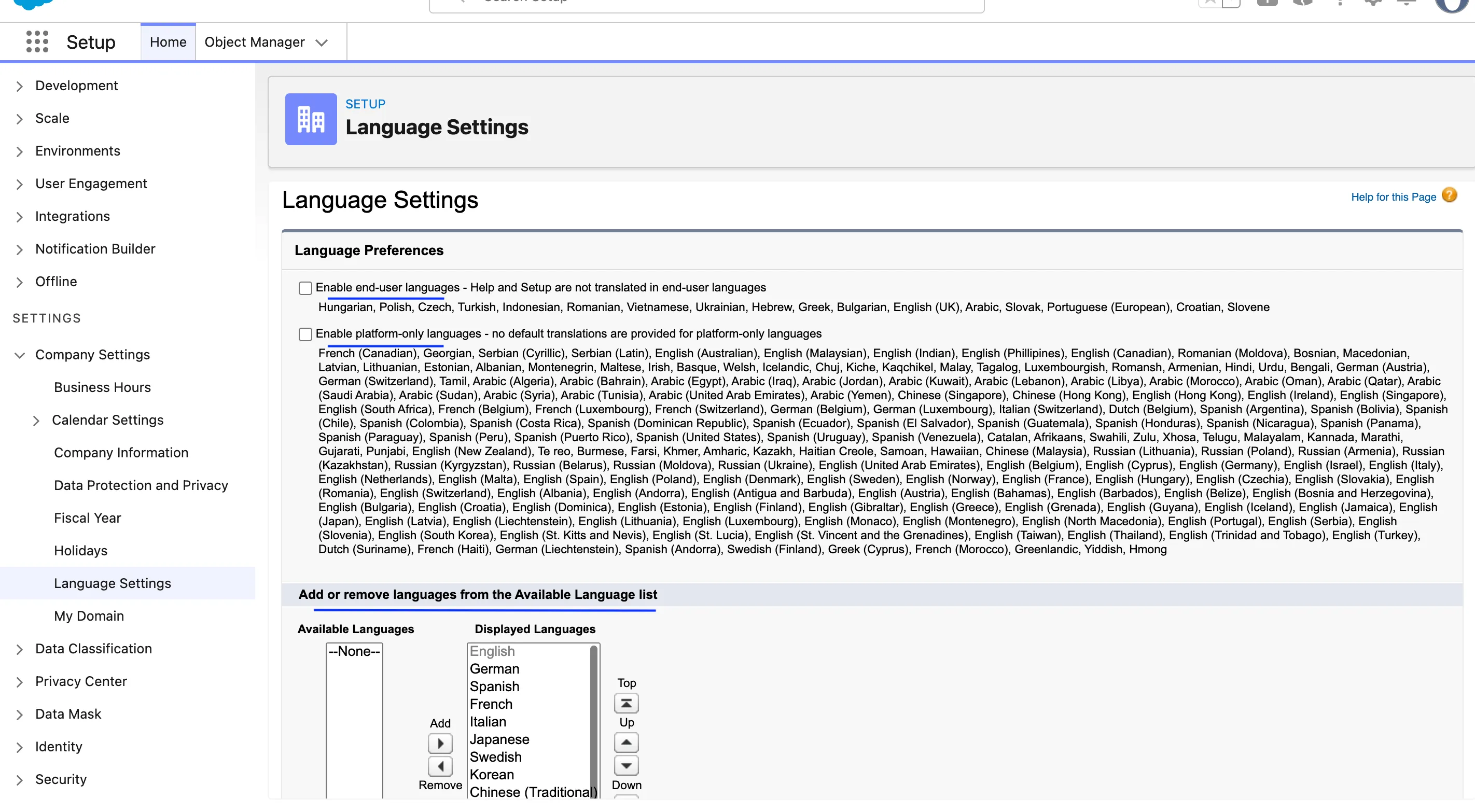
Let’s see what happens when you change the language:
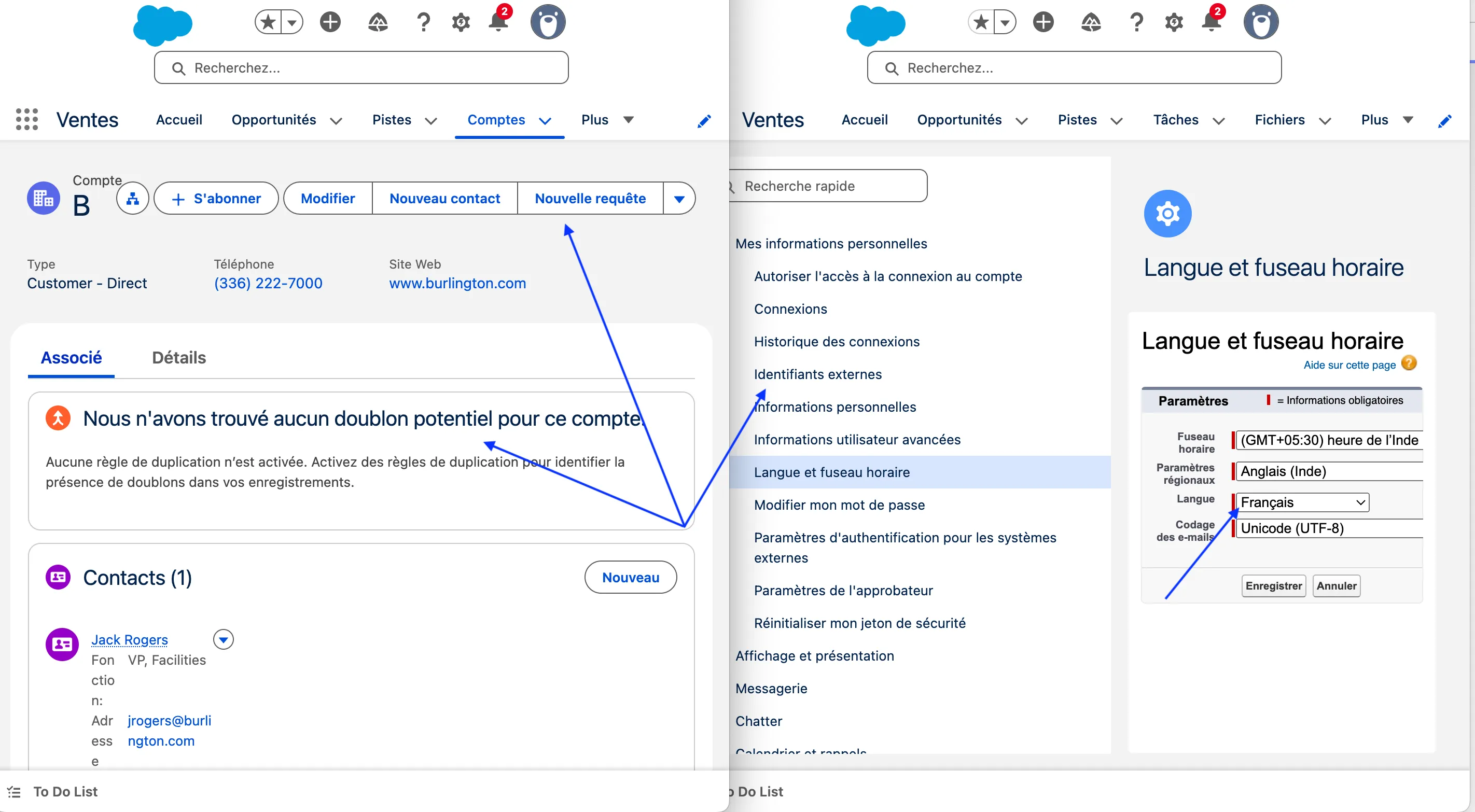
Note: The admin user cannot disable any language if that language is already being used by any user.
Some Scenarios to Watch and Troubleshoot
-
A team member reported that she can see all the record details properly in Spanish, except for three fields that remain untranslated.
Troubleshoot: Check whether the translations for those three fields in Spanish are correctly configured.
-
A salesperson from another country reported that the date format on the details page looks different, causing confusion between the day and month.
Troubleshoot: Check the user-level setting — if only a particular user faces the issue, their locale might differ from the organization’s.
Related Links
Test Your Knowledge!
Note: These questions are generated by AI manually using the content of the blog post.
1. What is the primary difference between 'Language' and 'Locale' settings in Salesforce?
2. If a user's personal locale setting is different from the organization-wide default, which setting will Salesforce apply for that user?